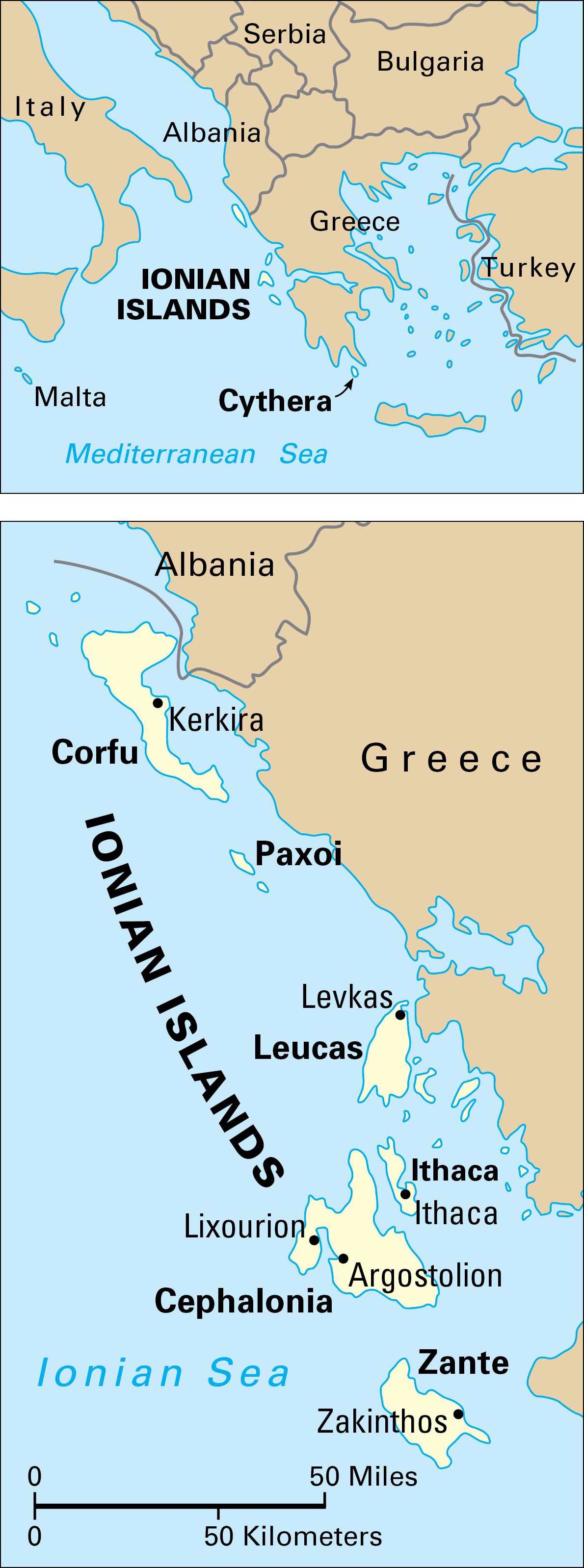Ionian, << eye OH nee uhn, >> Islands are a group of islands in the Ionian Sea that are part of Greece. The group consists of four large islands and many small islands. They lie off the west coast of mainland Greece. They have a total land area of 891 square miles (2,307 square kilometers) and a population of about 205,000.

The seven main islands are Corfu (or, in Greek, Kerkira), Paxoi (Paxi), Leucas (Lefkas), Ithaca (Ithaki), Cephalonia (Kefallinia), Zante (Zakinthos), and Cythera (Kithira). More than half of the people live on Corfu. The islands are hilly and have lush, green vegetation. The climate is wet and mild in winter, and dry and hot in summer.
Agriculture and tourism rank as the chief economic activities of the Ionian Islands. The main farm crops of the islands are grains, olives, and grapes. Tourist attractions include historic buildings and such water sports as sailing, fishing, and skin diving. The islands have little industrial activity except for textile production and food processing.
The Ionian Islands were first settled in the Stone Age, before 10,000 B.C. The islands figured prominently in the Odyssey, an ancient epic poem attributed to the Greek poet Homer. According to the poem, Ithaca was the home of Odysseus (called Ulysses in Latin), the hero of the story. The islands played an active role in the social and political life of ancient Greece. They came under Roman rule about 200 B.C. When the Roman Empire split into two parts in A.D. 395, they remained under the East Roman, or Byzantine, Empire.
Beginning in the 1300’s, Venice gradually took control of the Ionian Islands. They were an important part of Venice’s colonial empire until 1797, when the Venetian Republic fell to Napoleon Bonaparte. France ruled the islands from 1797 to 1800, Russia ruled them from 1800 to 1807, and France ruled them again from 1807 to 1815. The United Kingdom took over the Ionian Islands in 1815. British rule ended in 1864, and the islands became part of Greece.
